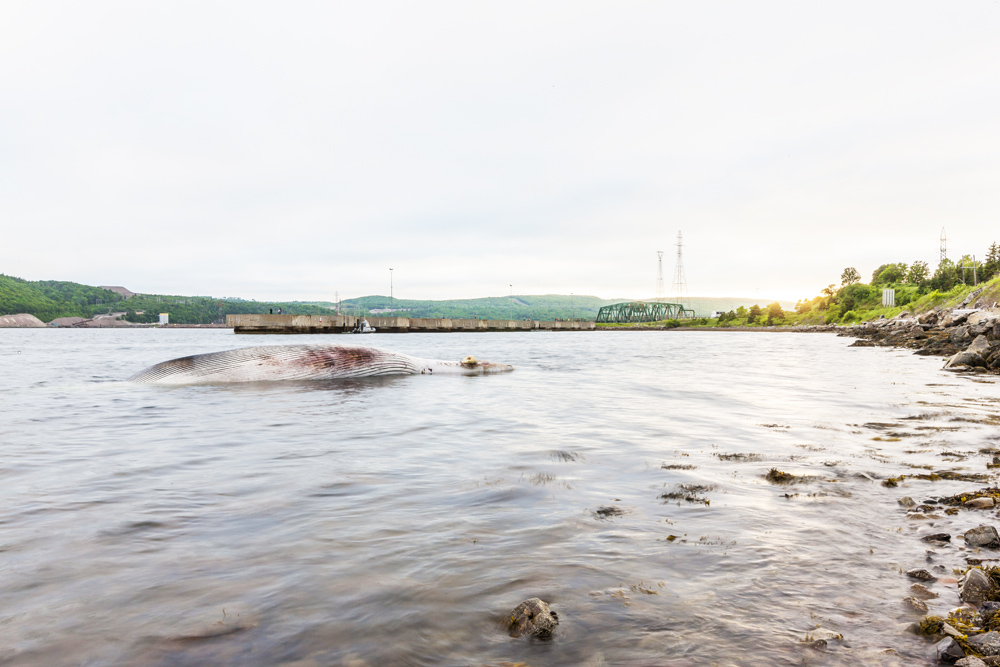
As they pass over the swing bridge that bears those words, visitors to Cape Breton are being treated to a decidedly inhospitable greeting - the stench of a decomposing 50-foot female fin whale.
The whale has come to rest on the shoreline below the busy Port Hastings visitor information centre.
Dwayne MacDonald, who represents the Port Hastings area on Inverness County council, noted he has spoken with someone who works at the tourist bureau and visitors are commenting on the smell, which gets worse by the day.
"Nobody wants to be responsible for moving it," MacDonald said. "It doesn't matter what government organization you work for, any level of government, nobody wants to take responsibility for anything.
"You call the 800-number that says to report a marine mammal and you get the coast guard and the coast guard says, 'it's not our responsibility, talk to the municipality,' and I said, 'I am the municipality, I'm the councillor.'"
Regardless of who is responsible, something has to be done quickly to remove the rotting carcass, MacDonald said, adding he's been discussing the issue with the county's CAO, who has been talking with various provincial and federal agencies.
"It's in a horrible place, it's the welcome centre to Cape Breton Island and nobody's doing anything about it, and I'm trying," he said.
"We're going to have to do something with it."
MacDonald said he thinks some responsibility should lie with the Canadian Coast Guard for making the decision to open the locks at the Canso Causeway when the dead whale became entangled there, allowing the carcass to travel to where it came to rest.
"The coast guard let it through the locks to the south side, if anybody is responsible for it, it's them," he said.
In an email, coast guard spokesperson Stephen Bornais said the whale carcass was initially stuck against the outside of the north gate of the Canso Canal, impeding vessel traffic. To clear that impediment, canal operators opened both the north and south gates allowing the tide to move the carcass through the canal.
"The disposal of whale carcasses above the high-tide mark is the responsibility of provincial or municipal authorities," Bornais wrote.
Krista Petersen, a spokesperson for the Department of Fisheries and Oceans, said it had officers in the area last week to look at the whale. It also worked with the coast guard to issue a notice to mariners so that boaters would be aware that the whale was in the area.
She noted that if the whale is in the water, removal is a federal responsibility, while if it is onshore, it is the responsibility of either the province or municipality, depending on what sort of arrangement those two parties may have.
Bruce Nunn, spokesperson for the provincial Department of Natural Resources, said the department is aware of the carcass and is working with other federal and provincial agencies to assess the situation.
An initial examination of the whale carcass indicated the mammal did not die of old age, as it wasn't fully grown, said Andrew Reid of the Marine Animal Response Society.
A full necropsy would have to be performed on the 16-metre whale before a cause of death is determined, but he said the society doesn't have the money to do that.
The society did take pictures, tissue samples and measurements of blubber thickness in an effort to get an idea of what happened.
The whale was first noticed Thursday near the Canso Causeway.



Reader Comments
to our Newsletter